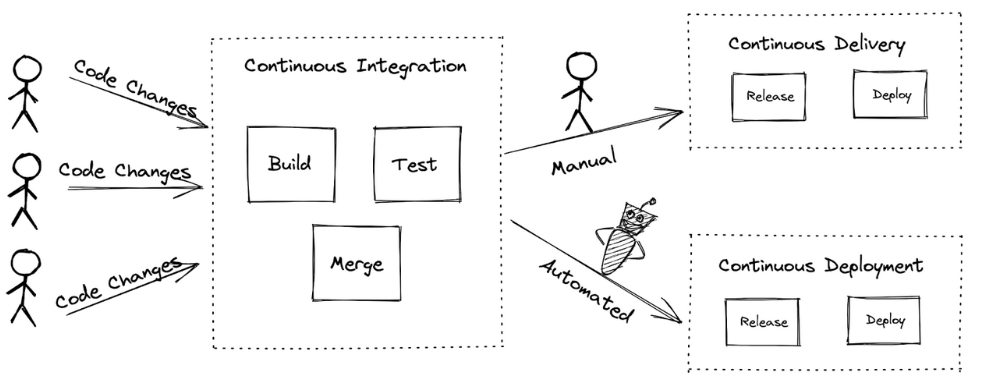Continuous Integration (CI) is a development method in which developers merge source code into a common repository regularly, ideally many times per day.
Continuous Integration is a DevOps software development approach in which developers integrate their code changes into a common repository frequently, following which automated builds and tests are done. So, Continuous Integration is most commonly used to refer to the build or integration step of the software release process, which includes both an automated component (e.g., a CI or build service) and a culture component (e.g., learning to integrate frequently). Because the main aims of Continuous Integration are to detect and fix issues faster, increase software quality, and shorten the time it takes to verify and deploy new software upgrades.
Why Do We Need Continuous Integration?
Because you’re integrating so regularly, there’s less backtracking to figure out where things went wrong, allowing you to spend more time implementing features.
Continuous Integration is not expensive. It is costly to not integrate continually. You’ll have lengthier times between integrations if you don’t use a systematic method. Finding and fixing problems becomes considerably more difficult as a result of this. But integration issues can easily throw a project off track or cause it to fail.

So, your company will profit from Continuous Integration in a variety of ways:
- Say goodbye to time-consuming and stressful integrations
- Increased visibility allows for better communication
- Catching problems early and putting them out of their misery
- Spend less time troubleshooting and more time implementing new features
- Create a strong foundation
- So, stop waiting to see if your code will work and start reducing integration issues allowing you to deliver software faster
Continuous Integration is more than a process
Several key concepts and practices support Continuous Integration.
The practices
- Keep a single repository of source code
- Automate the build
- Create a self-testing build
- Every commit needs to be created on a CI machine.
- Maintain a quick build
- Test in a production environment clone
- Make it simple for everyone to obtain the most recent executable version
- Everyone can see what is going on
- Then Automate the deployment process
How to do it
- Developers save code to their workspaces
- Once you’re done, save the changes to the repository.
- When changes occur, the CI server monitors the repository and checks them out
- Then CI server builds the system and runs unit and integration tests
- Deployable artifacts available for testing
- gives the just developed version of code a build label.
- The team is notified of a successful build by the CI server
- Notifies the team if the build or tests fail
- The crew solves the issue right away.
- Throughout the project, continue to integrate and test regularly
Team Responsibilities
- Frequently check-in
- Don’t check in any code that isn’t working
- Do not check in a broken build.
- After checking in, do not leave until the system has been built

